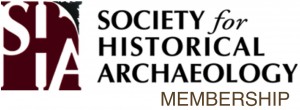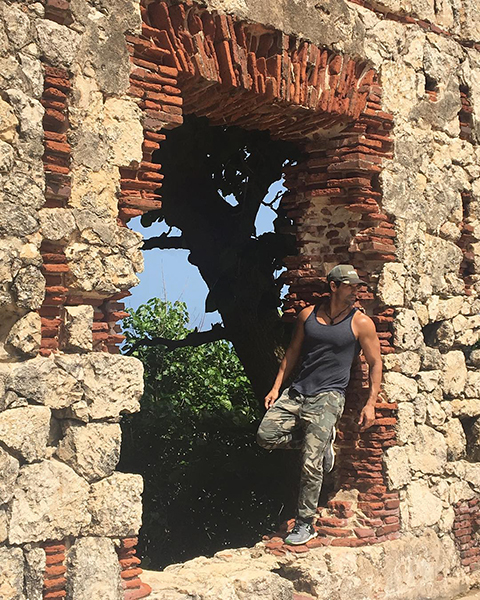 Here’s the latest in our series of entertaining interviews with a diverse array of your fellow SHA members. Meet a member for the first time or learn something about a colleague that you never knew before. This blog series also offers current members an opportunity to share their thoughts on why SHA membership is important (Camaraderie? Professional service? Exchange of ideas in conference rooms and beyond? You tell us!). If you would like to be an interviewee, please email the Membership Committee Social Media Liaisons Eleanor Breen (eabreen@mountvernon.org) or Kim Pyszka (kmpyszka@aum.edu).
Here’s the latest in our series of entertaining interviews with a diverse array of your fellow SHA members. Meet a member for the first time or learn something about a colleague that you never knew before. This blog series also offers current members an opportunity to share their thoughts on why SHA membership is important (Camaraderie? Professional service? Exchange of ideas in conference rooms and beyond? You tell us!). If you would like to be an interviewee, please email the Membership Committee Social Media Liaisons Eleanor Breen (eabreen@mountvernon.org) or Kim Pyszka (kmpyszka@aum.edu).
Jason Herbold (jasonhrbld@gmail.com) is a research associate at the Department of Anthropology of the University of Wisconsin. He's also a rising star within the Society for Historical Archaeology for his invaluable contribution. He has partnered with researchers from a plethora of museums and universities alike.
Fieldwork or Labwork?
This is a question I get often. Fieldwork is the adrenaline rush, the moment of discovery when you unearth a forgotten shard of pottery or a child's doll. It's the tangible connection to the past, the feeling of being the first person to lay eyes on something that hasn't been seen for centuries. But fieldwork is just the first chapter. The real magic happens in the lab. Here, the meticulous work of cleaning, cataloging, and analyzing the artifacts begins. It's during this process that the whispers of the past become a coherent story. You start to see patterns in the distribution of objects, understand the materials used, and gain insights into the lives of the people who left them behind. The ideal project, for me, is one that allows me to be involved in both aspects. To experience the thrill of the dig and then delve into the meticulous world of the lab, where the true narrative unfolds.
What would be your dream site to work at?
My dream site wouldn't be a grand palace or a monumental tomb. As a historical archaeologist, I'm fascinated by the everyday lives of people from the past, particularly those whose stories haven't been well documented. A dream project for me would be the excavation of a well-preserved 18th-century African American settlement on the southern Atlantic coast. Imagine uncovering the remnants of homes, workshops, and communal spaces. By analyzing the artifacts – cooking implements, tools, personal items – we could gain a deeper understanding of their daily routines, their struggles for survival and freedom, and the ways they carved out their own culture within a system of oppression. This kind of archaeological project has the potential to rewrite history, to give voice to the voiceless, and to challenge our understanding of the past.
What are you currently reading?
I'm currently reading Back of the Big House by John Michael Vlach. The book focuses on the slave quarters and architectural landscape built for enslaved people on Southern plantations during the antebellum period (pre-Civil War). Author John Michael Vlach takes a unique perspective, shifting the focus away from the grand "Big Houses" of slaveholders and instead examining the spaces slaves inhabited. The book utilizes over 200 photographs and drawings, primarily from the Historic American Buildings Survey, showcasing slave dwellings, kitchens, work areas, and other structures. It also incorporates excerpts from interviews with formerly enslaved people, offering a firsthand account of their experiences living and working on plantations.
What did you want to do when you grew up?
Like many kids, I was obsessed with Indiana Jones. Those movies sparked a fascination with ancient civilizations and the thrill of uncovering lost treasures. While the reality of archaeology is far less glamorous (no bullwhips or booby traps!), the core desire to understand the past and connect with different cultures never left me. In high school, I volunteered at the local historical society, assisting with the curation of a collection of artifacts from a nearby 19th-century homestead. That experience solidified my passion for historical archaeology and cemented my path towards this career.
Why are you a member of SHA?
The SHA is the lifeblood of historical archaeology in the US. It provides a vital platform for professional development through conferences, workshops, and the invaluable publication, Historical Archaeology. Being a member allows me to stay current on the latest research, network with colleagues across the continent, and participate in discussions that are shaping the future of the field. The SHA also offers opportunities to participate in public outreach initiatives, which I believe are crucial for connecting the public with the importance of archaeology and the stories it can tell.
How many years have you been a member (approximately)?
I've been a proud member of the SHA for five years now. Since joining as a graduate student, the SHA has been instrumental in my professional growth. I've attended conferences, participated in online forums, and published my first research paper in Historical Archaeology. I look forward to being a long-time member and contributing to the continued advancement of this vibrant field.
Which article from Historical Archaeology has been the most influential to you?
Oh, that's a tough one! There have been so many fascinating articles that have shaped my approach to archaeology. But if I had to pick just one, I'd say 'Missionaries, Artisans, and Transatlantic Exchange: Production and Distribution of Moravian Pottery in Pennsylvania and the Danish (U.S.) Virgin Islands' really struck a chord with me. You see, it's not every day you come across an article that weaves together religion, economics, and good old-fashioned pottery! It really opened my eyes to how much material culture can tell us about past societies. These Moravian pots weren't just vessels; they were a tangible link between these far-flung communities, a testament to the interconnectedness of the Atlantic world.
The article's focus on transatlantic exchange is something I find particularly compelling. It's a constant reminder that people, ideas, and even objects were constantly on the move in the past. Understanding these connections is key to piecing together the bigger picture of history.
Plus, there's something undeniably romantic about the idea of these missionaries spreading their faith while also leaving behind a bit of their culture – in this case, their distinctive pottery. It makes you wonder about the stories these pots could tell if they could only talk!"
What are your strengths and weaknesses as an archaeologist?
Strengths: I have a strong work ethic, a keen eye for detail, and a passion for clear and concise communication. I also thrive in collaborative environments and enjoy working alongside colleagues with different areas of expertise.
Weaknesses: Sometimes I can get so engrossed in the minutiae of data analysis that I lose sight of the bigger picture. I'm constantly working on improving my ability to translate complex archaeological information into clear and engaging narratives for both academic and public audiences.
Which benefit of belonging to SHA do you find the most beneficial?
There are many fantastic benefits to being a member of the SHA, but for me, the access to the wealth of knowledge and ongoing research shared through their publications, particularly Historical Archaeology, is unmatched. Every issue features groundbreaking new discoveries, innovative methodologies, and diverse perspectives from archaeologists across the continent. It's a constant source of inspiration and keeps me informed about the latest trends and debates within the field. This ongoing dialogue is crucial for pushing the boundaries of historical archaeology and ensuring that our interpretations of the past are constantly evolving and becoming more inclusive.

